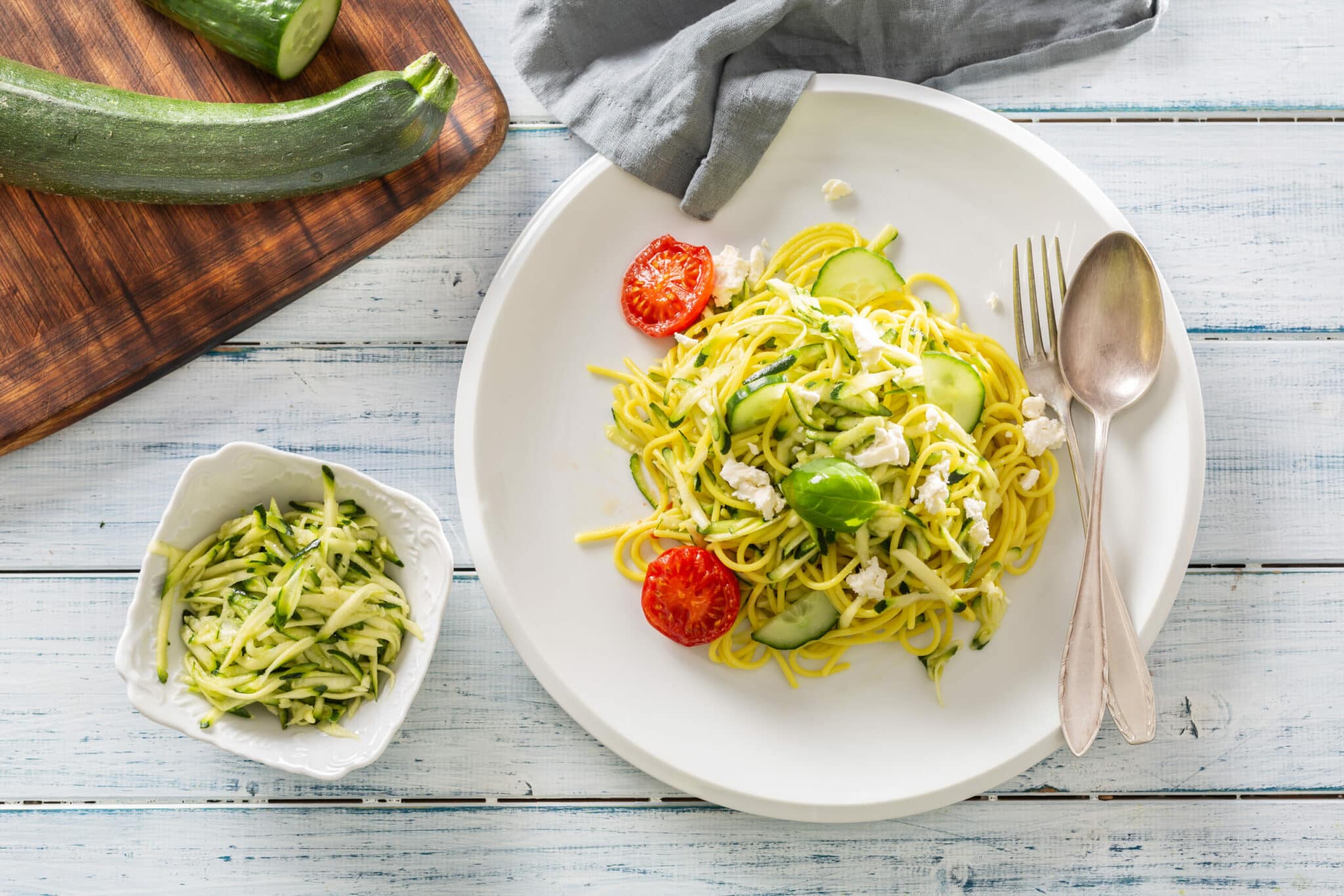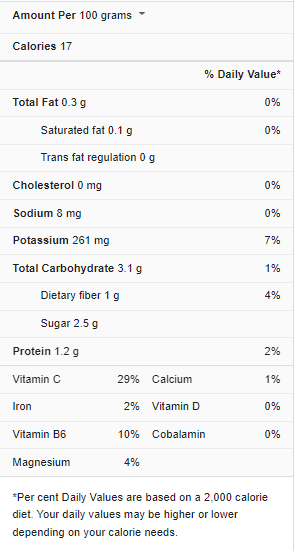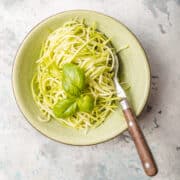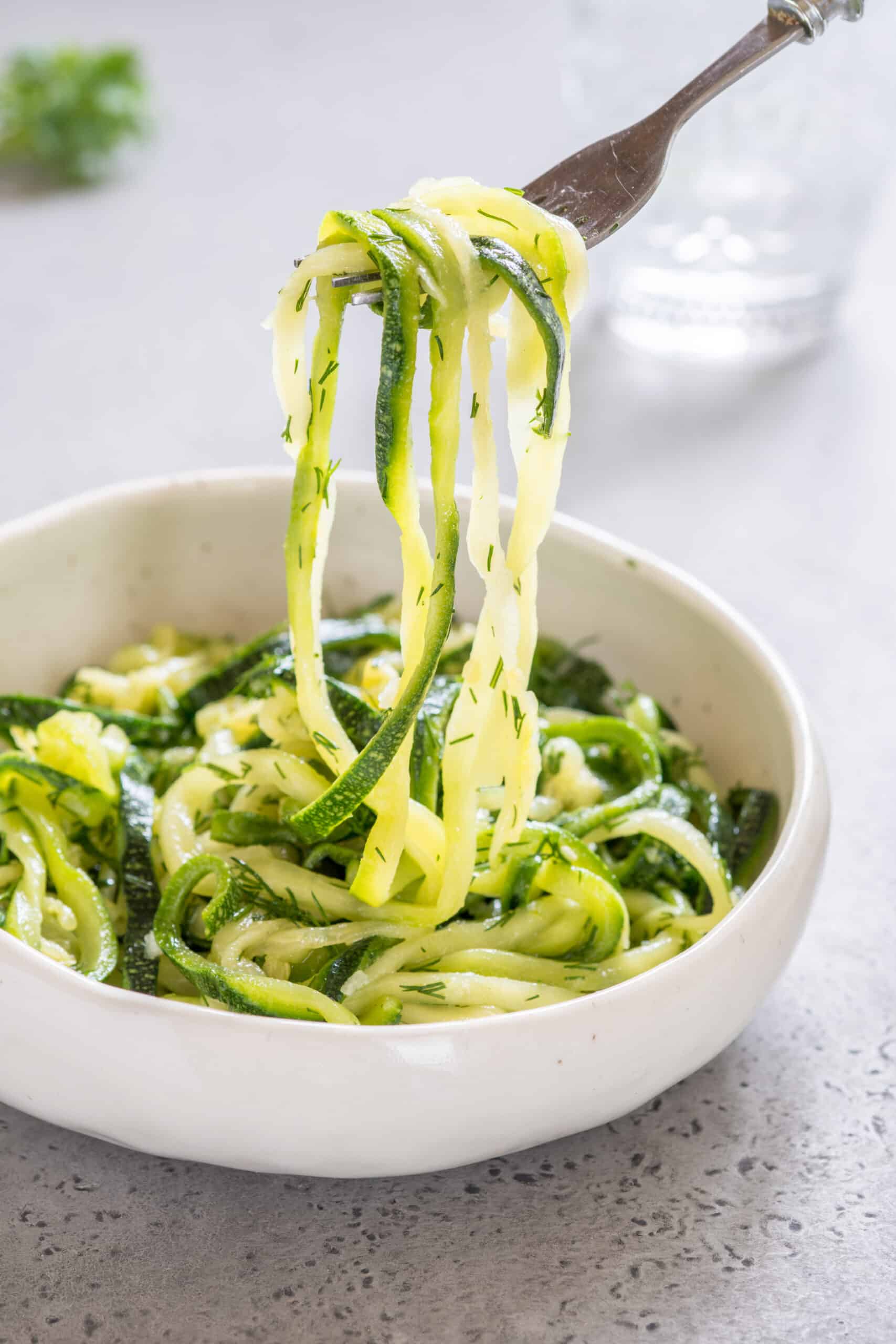Zucchini noodle is an excellent dish to freeze since it retains their flavor. On the other hand, reheating frozen zucchini may be tough. Water makes up the majority of zucchini (more than 95 percent).
The water content of a frozen vegetable increases, affecting the texture of the vegetable. It may be difficult to cook zucchini that has grown soggy. In this article, you can learn the best way to make and cook zucchini noodles, or “zoodles.”
You will note that this dish for zucchini noodles is simple and tasty. Plus, it has only four ingredients and is low-carb and keto-friendly. I also included some helpful hints to help you achieve culinary perfection.

Zucchini nutrition facts

Tips on how to cook frozen zucchini noodles
Since the frozen zucchini noodles contain over 90% water by weight, your cooked zucchini noodles will be a little watery.
You can avoid soggy cooked zucchini noodles by following a few simple steps. If you follow the tips below, you will always have good crispy zucchini noodles for all of your favorite dishes.
Drying out the frozen zucchini noodles – Line a baking sheet with paper towels. Carefully take the baking sheet from the oven and gently press it with paper towels or a clean dishrag to remove any remaining moisture.
Before baking the zucchini noodles in the oven for 30 minutes, you should sprinkle the zucchinis with sea salt.
Don’t let them get soggy – You can follow the package directions to cook the frozen zucchini noodles in a covered pan for about 5 minutes until they are al dente. You will find that the key to making cooking frozen zucchini noodles (that are not soggy) is to cook them until they are al dente.
Foods that absorb moisture should be included in the recipe -It is difficult to avoid excess moisture when nothing is supplied to absorb it. What is it about dipping bread in leftover pasta sauce that we find so appealing? You know it is to soak up all of the flavors!
So, you can either serve your noodles with some delicious crusty bread and dab as you go, or simply prepare with a moisture-absorbing item, such as cheeses, nutritious breadcrumbs, or absorbent veggies like eggplant or potato.
Thicken or reduce your sauce – Remove liquid the old-fashioned method if your recipe includes a hot sauce; reduction or thickening.
To reduce a sauce, simply cook it until all of the liquid has evaporated. To avoid burning, you should stir the sauce frequently while it is simmering. When you combine everything, you can reduce your sauce even more than usual to accommodate for the additional liquid from the frozen zucchini noodles.
Alternatively, you can add a starchy thickener to a sauce that thickens it. This can be a basic slurry prepared by mixing equal amounts of cornstarch and water. Stir this into your sauce and wait for it to thicken up.
Zucchini noodles in soup – Notably, you don’t have to worry about excess water when boiling zucchini noodles in a soup like this Chicken Zucchini Noodle Soup. The noodles will retain their moisture and remain fairly firm due to osmosis.
However, since the zucchini releases water into whatever soup you are cooking, the flavor might be slightly diluted. If you are cooking salty ramen, for example, the longer the noodles stay in the broth, the less umami flavor the ramen will have.
If you store the soup, you may easily correct this by adding more seasonings. This won’t be an issue if you eat the ramen shortly after it’s been cooked.
How To Cook Frozen Zucchini Noodles – Frozen zucchini slices or whole frozen zucchini can be cooked in the same way. In the oven, place the zucchini on a baking sheet lined with parchment paper. The heat will aid in the removal of excess water as well as the cooking and caramelization of the zucchini. Preheating the oven prevents it from thawing out.
Avoid overcooking your noodles – Zucchini noodles, like meat, will remain on a cutting board and continue to cook for a few minutes after being removed from the fire.
If you cook the noodles for too long and they are already limp and soggy, they will be even soggier when topped with sauce on your dish. I recommend cooking for only 5 minutes and flipping often to avoid soggy and limp noodles. You want a noodle that is somewhat al dente.
Eat immediately – Right before you are ready to eat, that is when you should plate your meal! Whatever you do to limit the moisture in zucchini noodles, water will drain out after they are cooked in a spicy sauce. Since every second counts, don’t let the noodles and sauce remain together for more than a minute before serving.
View this post on Instagram
How Long to cook frozen zucchini noodles
| Preparation Time | Cook Time | Total Time |
| 15 minutes | 45 minutes | 1-hour |

Frozen zucchini noodles (4 servings)
Ingredients
- 6 zucchini
- 2 teaspoons of salt
- 3 tablespoons of margarine
- 1 clove of garlic (minced)
- Salt
- Black pepper
- ¼ cup of grated Parmesan cheese
Instructions
- Toss the zucchini noodles with the 2 tablespoons salt and drain for 30 minutes in a colander.
- Boil some water in a pot. You should cook for one minute after adding the zucchini. Drain and rinse with cold water to halt the cooking process.
- In a large skillet, you can melt margarine over medium-high heat. Cook and stir until zucchini and garlic are barely soft, about 5 minutes. Season with salt and pepper to taste. Parmesan cheese is optional.
Despite the fact that zucchini contains a lot of water, freezing causes some of it to rise to the top, resulting in a ′′puddle′′ when the zucchini is defrosted. You may use frozen zucchini straight from the freezer in soup, but if you’re baking bread, cookies, or cake, defrost it first and blot it dry before using it.
Notably, this is a delightful and relatively simple noodle meal for those on a gluten-free or wheat-free diet. You can watch this video recipe to know how to cook frozen zucchini noodles.
